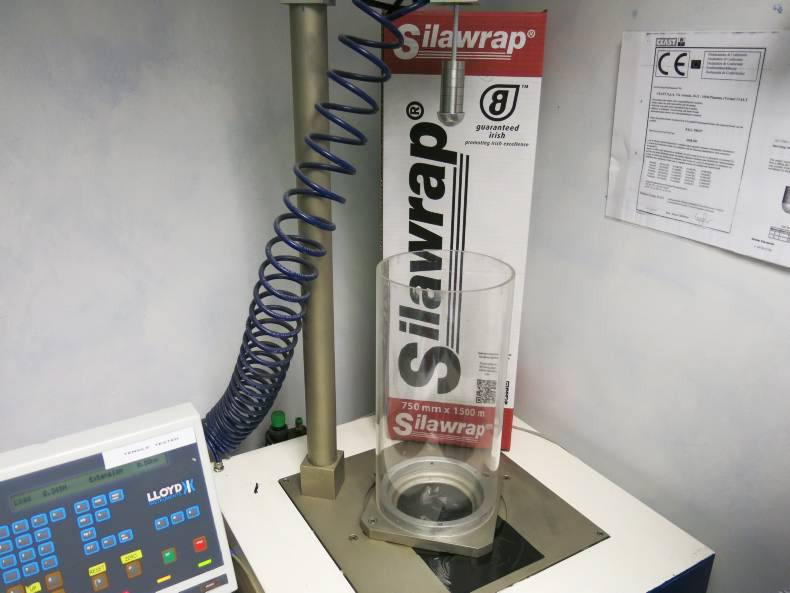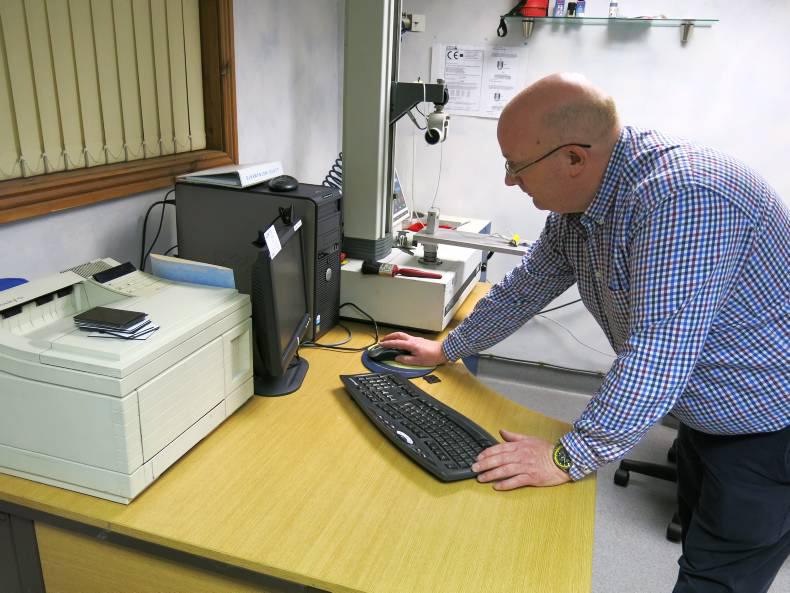Last week, the Irish Farmers Journal visited Maurice Keady at the Silawrap factory in Gorey, Co Wexford. This factory, originally built in 1996 by IP Europe, has produced silage film and maize film. The latest product developed at the plant is net replacement film, which Maurice is confident will be a real game changer when its full potential is realised by farmers and contractors.
The factory has changed ownership three times since 1996 and is now part of the Carlyle group. All that has stayed the same is the Silawrap brand. According to Maurice, over 160m bales have been wrapped in Silawrap film over the years.
He believes the film being produced at the factory is probably the best ever made on site. The reason for this is that a lot of new systems have been installed and the plant has moved to more automation in the production process. This inevitably reduces the chance of errors. Maurice also explained how Silawrap is produced from polyethylene (PE) resins made from oil and gas. PE resins are broken into different groups depending on their properties. Crop Packaging Systems, which makes Silawrap, uses linear low-density PE (LLDPE) resins in the production process. LLDPE resins are split into C4, C6 and C8 resins. This details the number of bonds between the molecules. A C8 resin has eight bonds and is therefore stronger. Crop Packaging Systems selects its resins for elasticity and strength. The resins come in granules similar in size to prilled urea. Maurice said: “We use 100% C8 resins. These are dearer than other materials but produce a stronger, better-quality film.”
Other raw materials include colour called master batch, UV light inhibitor and tack or glue. Sunlight causes film to break down. UV light inhibitor prevents this from happening. UV light levels vary around the world. For example, they are higher in Australia than Ireland. Therefore, more UV light inhibitor is added to Silawrap destined for this market. Tack is used to seal the film. There are many types. Crop Packaging Systems uses a viscous or thick formulation. This has to be heated in order to flow properly in the manufacturing process. According to Maurice, some other companies use a more liquid form of tack. He said this evaporates from between the layers of film during storage, allowing in air and reducing silage quality.
Extruding Silawrap
Silawrap extrusion is a continuous process, operating 24 hours per day, seven days a week. Lines shut down for annual maintenance and at regular intervals for service. It costs over €2,000 to start a line. Extruders are built for a specific purpose, for example manufacturing silage wrap or pallet wrapping film. Silawrap is a triple-layered film which means three layers of molten resins are fused together. This makes Silawrap tougher. According to Maurice, it also allows them to vary the resin mixture from layer to layer to maintain high quality and durability.
Quality control
Colm Southern is the quality control manager and is responsible for implementing the standard and testing of samples from the production line. Every shift, two rolls of film per line are tested to ensure that quality is sustained right through production.
This takes us in to the laboratory at the plant, where Colm carried out the quality test on the roll.
Picture one
The dart test measures the puncture resistance of the film. The test involves dropping a 300g weight on to the taunt film from a 60cm height. The standard used for this test is well above the industry regulation, according to Colm.
Picture two
Testing for tack or glue in the film involves the use of a specialised machine. The film is cut out using a standard rectangular size from random parts of the roll. The film is rolled flat on to the machine plate. The resistance to peel the film off the smooth plate is measured in Newton metres (Nm). The test revealed that it required a force of 4.6 Nm to peel off the film.
Picture three
Measuring the elasticity of the film uses the same machine as the tack with a different computer controlling the movement. The film is attached vertically between two clamps and pulled. The result showed that the film gave 1,500% stretch. The elasticity is measured in the direction the film is applied on the bale.
Picture four
The tear test is carried out by placing a small nick in the film and again measuring the force required to tear the film in the direction the film is being rolled on to the bale by the wrapper. The result showed that it had 400Nm tear strength.
Other tests ensure that film is the correct length on the roll. This is achieved by winding the roll with a meter counter. At this point the film can be inspected for any other issues. The width of the film is also measured to ensure that it is in the tolerance level required. Silawrap is a 25 micron film and the test showed 24.95 microns on the day.
It was interesting to see how in-house quality control worked on a 24-hour operational plant. The results of the tests carried out far exceed the industry standards set for silage film, according to Colm.






 This is a subscriber-only article
This is a subscriber-only article









SHARING OPTIONS: